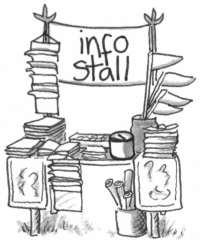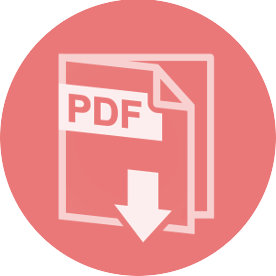Publicity and outreach are essential for communicating campaign messages and getting people involved in taking action. This guide gives you some tips on how to best get your message across. Taking time to think which methods will be most effective for you usually means a bigger impact.
Your publicity will have a different focus depending on what you are trying to achieve. For example, if your aim is to get more people along to meetings, it’s fine to pitch it at people who already agree with you. If you want to raise awareness about an issue among people with no prior knowledge, your publicity will need a broader appeal.
As campaigners we tend to overwhelm people with information – issues are complex and there is so much we care about. But: people are bombarded with lots of messages every day. To get our messages across we need to focus on a few simple and clear things that will stick in people’s minds.
Consider the aims of your campaign. What are the three most important things to get across to people? These are your key messages. Write them down in two or three short, clear sentences and focus on them in the publicity. You may need to reword them depending on who you are talking to.
Think about what message different people will be most interested in. For example, if you live a long way away from a new power station your main worry might be climate change. People who live nearer will have to put up with other impacts, e.g. loss of green space, noise, air pollution etc. Your leaflet may come across best if you acknowledge the issues that affect people directly, as well as the reasons you are concerned.
Publicity is about getting people on your side. Rants may be satisfying but are unlikely to achieve your aim. Win people over, be creative and welcoming. If you are confronting people with the consequences of their actions, criticise their behaviour rather than them as individuals. Acknowledge people’s ability to change and give them options to make that easier.
All your communications should contain a clear call to action and give people concrete things to do, whether that’s joining your group, cutting car use, coming to see a film, boycotting a product, writing a letter, or growing their own vegetables.
Always supply your contact details, including (but not only) websites and social media sites so people can find out more and get involved.

Once you’ve worked out your basic message and who you are targeting then decide on the best way of getting your message across to them. Remember you want to get people on your side, so make it easy for your audience to listen to you.
Don’t expect people to come to you for information – go to them. Use media platforms, real-life venues, language and styles that your particular audience will be comfortable with.
When talking to teenagers think stickers, fly-posting, gigs, and of course social media. Business people may prefer to attend a talk by an expert at the town hall. Jo Public and local councillors are usually more receptive to a panel discussion on neutral ground than reading graffiti on a wall.
Social media is a very effective way to get the word out – most people use social media daily, which means you can reach them regularly with frequent and short updates and news. One of the strengths of social media platforms is that they make it easy to advertise events and to gauge how your message is getting across. One weakness is that social media can be an ‘echo chamber’ where you mainly communicate with people who already share your world view and social circle. Plus, not everyone uses social media – there is still a need for stalls and leaflets to spread your message wider.
Lots of information to read on a screen can be hard to digest, so don’t overload your followers with complex arguments – feed them information one point at a time.
Social media can create a feeling of being involved. However, remember that people re-tweeting you or liking your posts only goes so far. Make it easy for people to play a more active role. Use online media to get people interested, then mobilise them for meetings, events and actions! Find ways that people who can’t make meetings can still take on a pro-active role if they want to, e.g. drafting a press release.
Consider what time and resources you want to spend on publicity. What skills do you have in the group and what do you enjoy doing?
For example, running a decent social media campaign takes commitment and time – if you don’t have that time then don’t start posting regularly in the first place.

